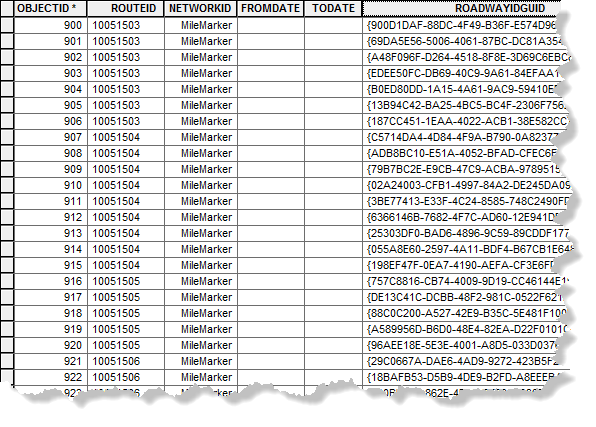Routes are PolylineM features that store measure values on their vertices to model the distance along a line. The measure values are stored on the vertices because, in many cases, the geometry of a feature is not as accurate as the measured lengths maintained for the feature. This can be the case for roads, pipes, railways, and other linear features. The routes maintain measures to support locating linear referenced events.
In the advanced linear referencing system (ALRS), the LRS editor associates centerline features and provides measure inputs using ArcGIS Pipeline Referencing tools to create or modify routes. The Pipeline Referencing tools create or modify route features, calculating and storing the measure values on the route’s vertices. The centerlines are managed in a separate Polyline feature class and are associated to routes by the Pipeline Referencing tools in the centerline sequence table. The centerline sequence table allows the same centerlines to be associated to different routes in the same LRS Network (as is the case with concurrent routes) or to routes in different LRS Networks. This ability allows the same polyline geometry (centerline) to be used to create different measure systems (route features). Examples include continuous, engineering stationing, state mile point, and county mile point, which are all different systems of measure that can be built on the same centerlines.
It is important to note that only LRS editors need to work with centerline features to build and edit routes. To locate linear referenced events on routes or to do measure or spatial analysis on routes does not require centerlines. In addition, the LRS editor need not work with the centerline sequence table explicitly. The Pipeline Referencing tools take care of implicitly populating this table.
Centerline feature class
The centerline feature class is the geometry source from which routes are created. It must have an ObjectID field, a CenterlineID field, and From and To date fields. The CenterlineID is a system-generated, globally unique identifier (ID) that Pipeline Referencing uses to associate centerlines to routes. The centerline feature class can be given a name that is appropriate to your business, but you may have only one centerline feature class per ALRS.

Centerline sequence table
The centerline sequence table is a cross-reference table for the many-to-many relationships between centerlines and routes. The table must include the CenterlineID field, the RouteID field, the LRSNetworkID field, and FromDate and ToDate fields.
